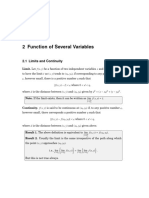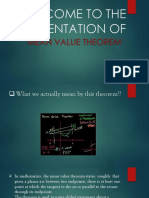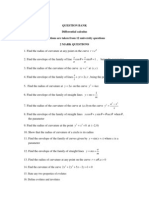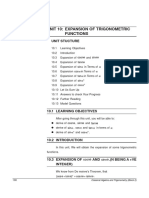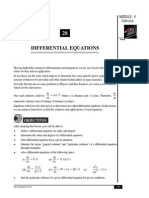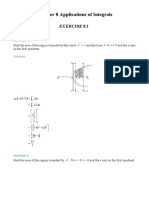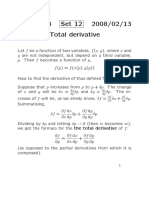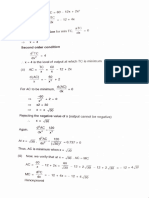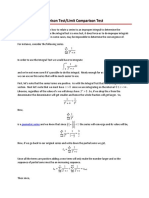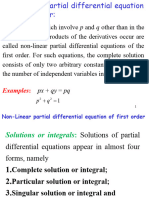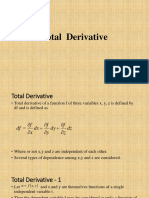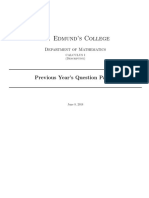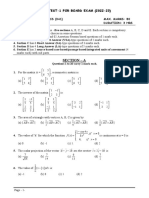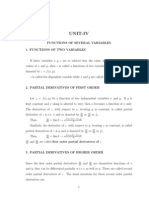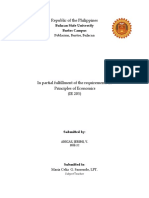0% found this document useful (0 votes)
696 views42 pagesUnit 1: Partial Differentiation: Dr. Deepika
This document discusses partial differentiation and related concepts including:
- Functions of two variables and their partial derivatives
- Geometrical representation of partial derivatives
- Methods for computing first and second order partial derivatives
- Chain rule and implicit differentiation formulas for computing derivatives
- Total differential and change of variables formulas
- Examples of applying these concepts to solve problems involving partial derivatives
Uploaded by
Apoorav GoyalCopyright
© © All Rights Reserved
We take content rights seriously. If you suspect this is your content, claim it here.
Available Formats
Download as PDF, TXT or read online on Scribd
0% found this document useful (0 votes)
696 views42 pagesUnit 1: Partial Differentiation: Dr. Deepika
This document discusses partial differentiation and related concepts including:
- Functions of two variables and their partial derivatives
- Geometrical representation of partial derivatives
- Methods for computing first and second order partial derivatives
- Chain rule and implicit differentiation formulas for computing derivatives
- Total differential and change of variables formulas
- Examples of applying these concepts to solve problems involving partial derivatives
Uploaded by
Apoorav GoyalCopyright
© © All Rights Reserved
We take content rights seriously. If you suspect this is your content, claim it here.
Available Formats
Download as PDF, TXT or read online on Scribd
/ 42

